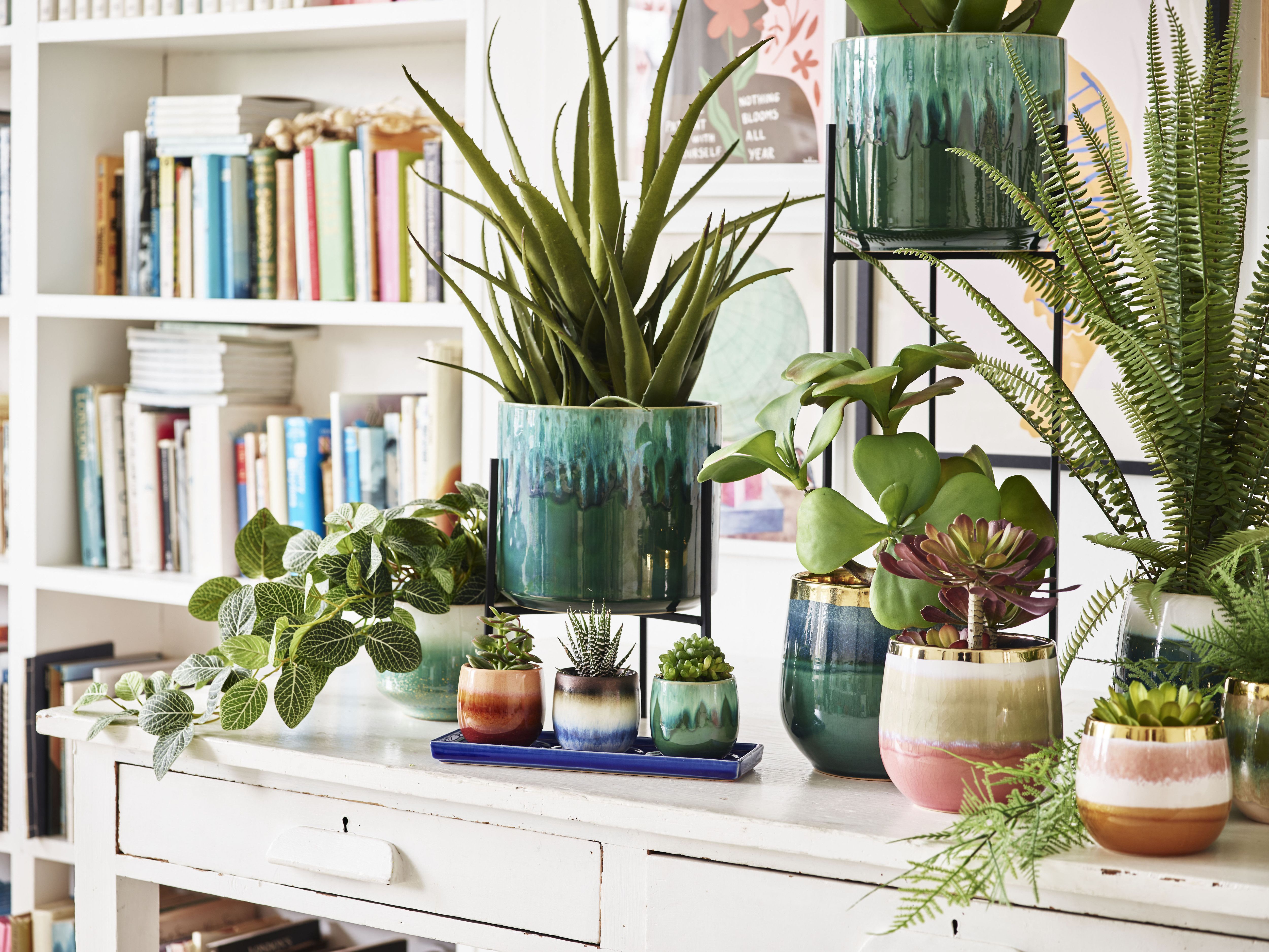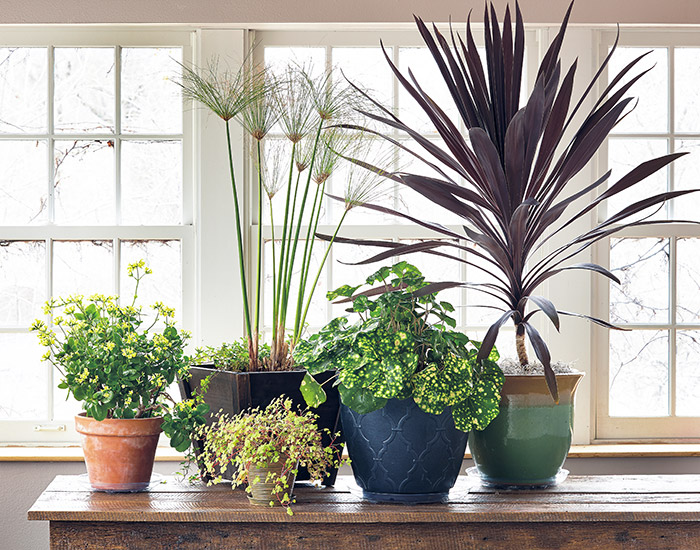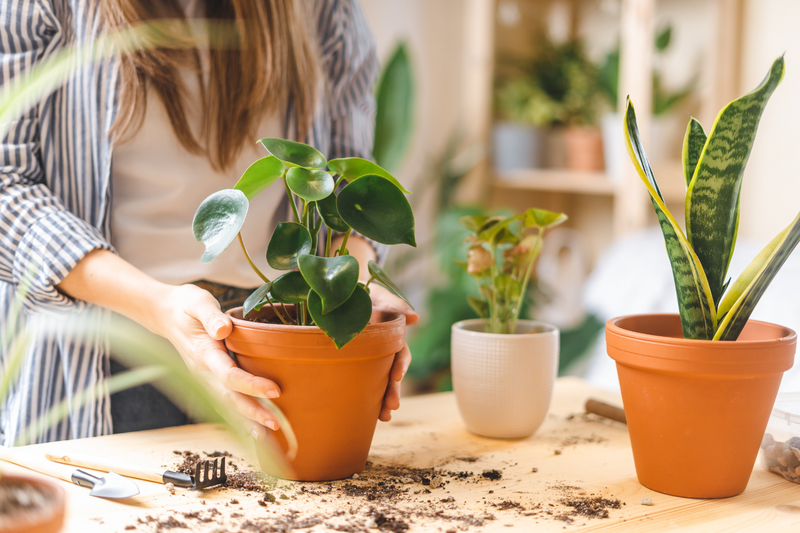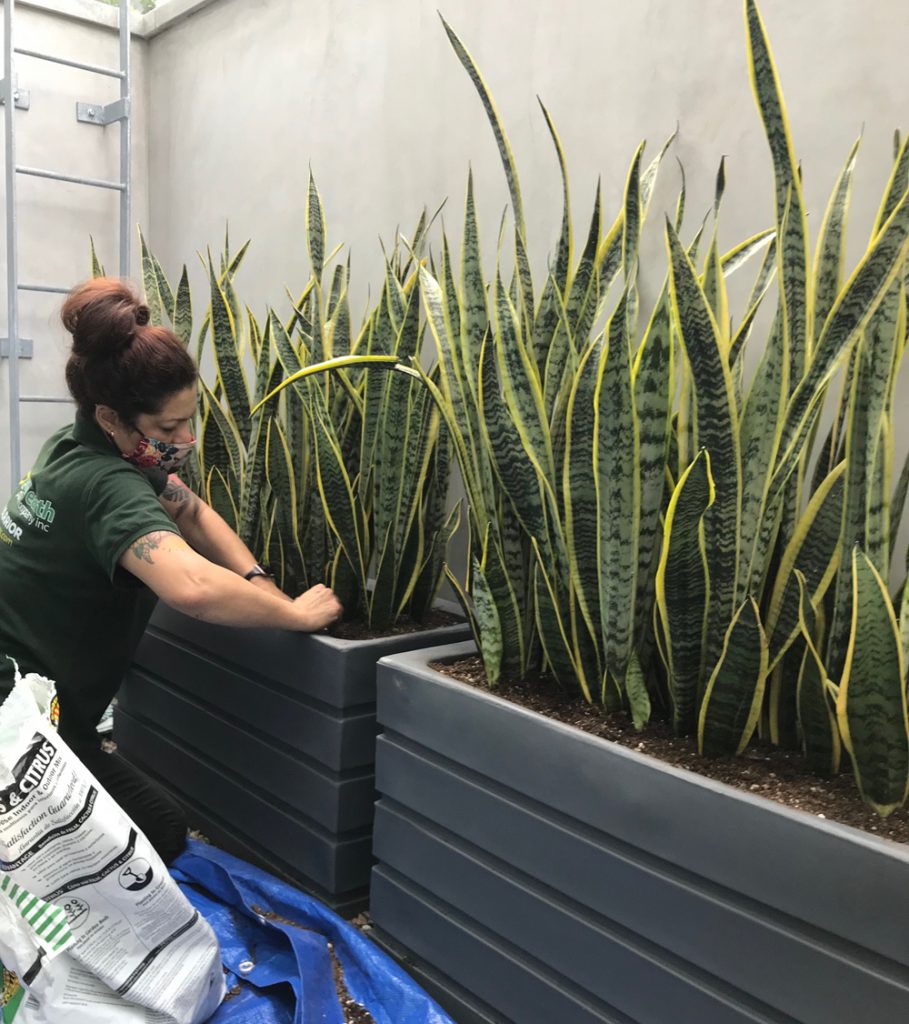How to Choose and Care for Container Plants Indoor
Container plants indoor
Choosing and caring for container plants indoors can be a rewarding experience for both seasoned gardeners and beginners alike. Indoor plants not only add beauty and vibrancy to your living space but also contribute to better air quality by purifying the air and removing toxins.
When it comes to choosing container plants for indoor use, it’s important to consider factors such as light requirements, moisture needs, and the size of the plant. Some plants thrive in low light conditions, while others require bright, indirect light. It’s important to select plants that are suitable for the specific lighting conditions in your home.
In addition to light requirements, you also need to consider the moisture needs of the plants. Some plants, like succulents, prefer dry conditions and only need to be watered sparingly, while others, like ferns, require more frequent watering. It’s important to understand the specific watering needs of each plant in order to provide the proper care.
Another important factor to consider when choosing container plants is the size of the plant. Some plants, such as herbs or small flowering plants, are well-suited for smaller containers and can be placed on windowsills or tabletops. However, larger plants, such as palm trees or fiddle leaf figs, require larger pots and more space to grow.
Once you’ve selected the right plants for your indoor space, it’s essential to provide them with the proper care and maintenance. This includes regular watering, fertilizing as needed, and monitoring for pests or diseases. Each type of plant will have specific care requirements, so it’s important to research and understand the needs of each individual plant.
By carefully choosing and caring for container plants indoors, you can create a beautiful and healthy environment in your home. With the right selection and proper care, your indoor plants can thrive and bring a touch of nature into your living space.
Why Container Plants are Great for Indoor Spaces
Growing plants indoors has numerous benefits, and one of the best ways to incorporate nature into your indoor space is by using container plants. Container plants are a popular choice for indoor gardening because they can be easily moved around and placed in any room or area that needs a touch of greenery. Whether you have limited space or simply want to add some life to your living room, container plants are a versatile and practical option.
Container plants also offer a variety of options when it comes to size, shape, and color. Whether you prefer tall, leafy plants that can be placed in corners or small, colorful plants that can be displayed on windowsills, there is a container plant for every style and preference. Additionally, the wide range of plant species available in container form allows you to choose plants that thrive in your specific indoor environment, whether it’s a bright and sunny spot or a shady area.
Another advantage of container plants is their ability to improve indoor air quality. Plants naturally help to filter and purify the air by absorbing carbon dioxide and releasing oxygen. This can create a healthier and more pleasant living environment, especially in urban areas where outdoor air pollution may be a concern. In addition, plants can help to reduce indoor humidity, which can be beneficial in spaces that are prone to mold or mildew.
Container plants are also a wonderful way to bring nature into your home and connect with the outdoors. Caring for plants can be a fulfilling and therapeutic activity, and having greenery around can have a calming effect on the mind and body. In addition, the presence of plants indoors can create a sense of tranquility and beauty, making your indoor space more inviting and enjoyable.
Benefits of Container Plants
:strip_icc()/indoor-potted-houseplants-703b321a-81cf8e1f9aee48a28e1be3bbc45e4386.jpg)
Container plants provide a range of benefits that make them a great option for indoor gardening. Here are some of the key advantages:
- Versatility: Container plants can be placed anywhere in the home, allowing you to create a green oasis in any room. Whether you have a small apartment or a spacious house, container plants can easily fit into your living space.
- Aesthetics: With a wide variety of plant species available, you can choose container plants that match your décor and personal style. The vibrant colors and unique shapes of container plants can add a touch of nature and beauty to any indoor space.
- Air purification: Many container plants have the ability to purify the air by removing toxins and releasing oxygen. This can improve the overall air quality in your home and create a healthier environment for you and your family.
- Stress relief: Research has shown that spending time around plants can help reduce stress and improve mood. The presence of container plants in your indoor space can create a calming and peaceful atmosphere, providing a sanctuary from the outside world.
- Flexibility: Container plants are easy to move and rearrange, allowing you to experiment with different layouts and designs. This flexibility gives you the freedom to change the look and feel of your indoor space whenever you desire.
- Improved focus and productivity: Studies have found that having plants in the workplace can increase productivity and concentration levels. The same benefits can be extended to your home office or study area by incorporating container plants into the space.
In conclusion, container plants offer a range of benefits that make them an excellent choice for indoor gardening. From their versatility and aesthetic appeal to their air purification properties and stress-relieving effects, container plants can enhance the quality of your indoor environment and create a more enjoyable living space.
Factors to Consider When Choosing Container Plants
When choosing container plants for indoor use, there are several factors to consider. These factors can help ensure that the plants you choose will thrive in their new environment and continue to grow and flourish for years to come.
Light Requirements:

One of the most important factors to consider when selecting container plants is their light requirements. Some plants require full sun, while others prefer partial or indirect sunlight. It’s essential to choose plants that will receive the necessary amount of light in your home. Consider the location of your windows and the amount of natural light they receive throughout the day.
Size and Shape:
Another factor to consider is the size and shape of the container plant. Different plants have different growth habits, and it’s important to choose a container that can accommodate their size. Consider the mature size of the plant and choose a pot that allows room for its roots to grow. Additionally, consider the shape of the container and how it will fit in with your overall interior design.
Watering Needs:
:max_bytes(150000):strip_icc()/SPR-HOME-11-best-indoor-plants-4158252-caea9602f59b4dd086a43f31201b5737.jpg)
Watering needs are another crucial factor when choosing container plants. Some plants require more frequent watering, while others prefer to dry out between waterings. Consider your schedule and how often you will be able to water the plants. You should also consider the humidity levels in your home, as some plants thrive in more humid environments.
Climate and Temperature:

Consider the climate and temperature in your home when choosing container plants. Some plants are more sensitive to temperature fluctuations and may not thrive in certain environments. Make sure to choose plants that are suitable for the climate in your area and can tolerate any temperature changes that may occur indoors.
Maintenance Level:
:max_bytes(150000):strip_icc()/2349201_indoo16165_cg-1-2fc8b316d76043128f911d1332ae9222.jpg)
Finally, consider the maintenance level of the plants you are considering. Some plants require more care and attention than others. If you have a busy schedule or are a beginner gardener, it may be best to choose plants that are low-maintenance and can tolerate a bit of neglect.
By considering these factors when choosing container plants, you can ensure that you select the right plants for your indoor space. This will help create a harmonious and healthy environment for both you and your plants to thrive.
Types of Container Plants for Different Environments
1. Low-Light Environments
If you have a space in your home or office that receives very little natural light, there are still some container plant options that can thrive. Some plants that do well in low-light environments include:
- Snake Plant (Sansevieria)
- ZZ Plant (Zamioculcas zamiifolia)
- Peace Lily (Spathiphyllum)
- Chinese Evergreen (Aglaonema)
- Pothos (Epipremnum aureum)
2. Sunny Environments
If you have a sunny spot in your home or office, you can choose from a variety of container plants that thrive in bright, direct sunlight. Some plants that do well in sunny environments include:
- Succulents: Jade Plant (Crassula ovata), Aloe Vera (Aloe barbadensis), Haworthia
- Cacti: Barrel Cactus (Echinocactus grusonii), Bunny Ears Cactus (Opuntia microdasys), Christmas Cactus (Schlumbergera)
- Herbs: Basil, Rosemary, Thyme
- Flowering Plants: Geraniums, Marigolds, Petunias
3. Humid Environments

Some plants thrive in environments that have higher levels of humidity, such as a bathroom or kitchen. These plants are able to tolerate the moist conditions and may even benefit from the extra moisture. Some plants that do well in humid environments include:
- Ferns: Boston Fern (Nephrolepis exaltata), Maidenhair Fern (Adiantum), Bird’s Nest Fern (Asplenium nidus)
- Spider Plant (Chlorophytum comosum)
- Peace Lily (Spathiphyllum)
- Calathea
- Philodendron
4. Dry Environments

If you live in an area with dry air or have a specific spot in your home or office that has low humidity, there are still container plants that can thrive. These plants are able to tolerate drier conditions and require less frequent watering. Some plants that do well in dry environments include:
- Succulents: Echeveria, Sedum, Kalanchoe
- Air Plants (Tillandsia)
- Yucca
- Agave
- Cacti: Saguaro Cactus (Carnegiea gigantea), Golden Barrel Cactus (Echinocactus grusonii), Organ Pipe Cactus (Stenocereus thurberi)
Tips for Selecting Healthy Container Plants

1. Inspect the leaves
:max_bytes(150000):strip_icc()/2175101_topia61w-2-2000-ede0b337b1394fe1bff995383ca881fe.jpg)
When choosing container plants, it is important to inspect the leaves for any signs of damage or discoloration. Look out for yellowing, spots, or wilting, as these can be indications of a plant that is unhealthy or not receiving proper care. Healthy leaves should be vibrant in color and free from any blemishes.
2. Check the roots

Another important factor to consider when selecting container plants is the roots. Gently remove the plant from its container and examine the roots. Healthy roots should be firm, white, and spread evenly throughout the soil. Avoid plants with roots that are brown, mushy, or tangled, as these can be signs of root rot or poor growth.
3. Look for pests
Pests can be a common problem in container plants, so it is important to carefully inspect the plant for any signs of infestation. Look for pests such as aphids, mealybugs, or spider mites, which can cause damage to the plant. Avoid plants with visible pests or signs of damage caused by pests, as this can lead to future problems.
4. Consider the plant’s overall health
When choosing container plants, take a step back and consider the overall health of the plant. Look for plants that are well-proportioned, with a balanced shape and size. Avoid plants with leggy growth or plants that appear stunted or weak. Healthy plants should have strong stems and a full, lush appearance.
5. Research the specific care requirements

Before purchasing a container plant, it is important to do some research on its specific care requirements. Different plants have different needs when it comes to sunlight, water, and temperature. Make sure you are able to provide the necessary care and conditions for the plant to thrive in your home before making a purchase.
6. Get recommendations from experts
If you are unsure about which container plants to choose, consider seeking advice from experts such as garden center staff or horticulturists. They can provide recommendations based on your specific needs and preferences, as well as offer guidance on plant selection and care. Don’t hesitate to ask questions and gather as much information as possible before making a decision.
Best Practices for Container Plant Care
1. Choose the Right Size Container

When selecting a container for your indoor plant, make sure it is the right size. The container should be large enough to accommodate the roots and provide room for growth. If the container is too small, the plant’s roots may become cramped and hinder its growth. On the other hand, if the container is too large, it can lead to overwatering and root rot. Consider the size of the plant and choose a container that allows for ample space.
2. Use Well-Draining Soil
Proper soil is essential for container plant care. Use a well-draining soil mix that allows excess water to escape. This helps prevent overwatering and root rot. Avoid using garden soil, as it tends to become compacted in containers, hindering root growth. Look for high-quality potting soil that is labeled specifically for container plants.
3. Provide Adequate Watering

Watering is a critical aspect of container plant care. Each plant has different water requirements, so it is important to do some research and understand the needs of your specific plants. Generally, plants should be watered when the top inch of soil feels dry to the touch. Avoid overwatering, as this can lead to root rot. On the other hand, underwatering can cause the plant to wilt and die. Find a balance and adjust watering based on the plant’s needs and environmental conditions.
4. Ensure Proper Lighting
Proper lighting is crucial for the health and growth of indoor container plants. Most plants require bright, indirect sunlight to thrive. Place your plants near a window that receives sufficient natural light, but avoid direct sunlight, as it can scorch the leaves. If natural light is limited, consider using artificial grow lights to supplement the lighting needs of your plants.
5. Monitor Temperature and Humidity

Temperature and humidity levels can greatly impact the health of your indoor plants. Most plants prefer temperatures between 60-75°F (15-24°C). Avoid placing plants near air vents or drafts, as this can lead to temperature fluctuations. Additionally, consider the humidity levels in your home and provide a humidifier or mist the plants regularly to create a suitable environment. Be mindful of any specific temperature and humidity requirements your plants may have.
6. Fertilize Regularly
To ensure optimal plant growth and health, it is important to provide the necessary nutrients. Use a balanced, water-soluble fertilizer and apply according to the instructions on the package. Overfertilizing can be harmful to plants, so it is important to follow the recommended dosage. Fertilize your plants regularly during the growing season, typically once every 2-4 weeks.
7. Monitor and Treat Pests
:strip_icc()/Plants-Stress-Millennials-81a1ef74d68c4704842483a3be37de60.jpg)
Indoor plants are susceptible to pests, such as aphids, spider mites, and fungus gnats. Regularly inspect your plants for any signs of pests, such as distorted leaves, sticky residue, or small insects. If you notice an infestation, take immediate action to treat it. There are various natural and chemical pest control methods available. Be sure to follow the instructions on the chosen product and take precautions to protect yourself and your plants.
By following these best practices for container plant care, you can ensure the health and longevity of your indoor plants. Remember to observe your plants closely, adjust care as needed, and enjoy the beauty and benefits they bring to your living space.
Common Mistakes to Avoid When Caring for Container Plants
Lack of drainage holes

One common mistake that many people make when caring for container plants is not ensuring proper drainage. It is important to have drainage holes in the bottom of your containers to allow excess water to escape. Without proper drainage, water can collect in the bottom of the container and lead to root rot and other problems.
Overwatering
Another mistake to avoid is overwatering your container plants. It can be easy to give them too much water, thinking that it is necessary for their health. However, overwatering can drown the roots and lead to root rot. It is important to water container plants only when the top inch of soil feels dry to the touch.
Using the wrong type of soil
The type of soil you use for your container plants is crucial for their health. Using the wrong type of soil can lead to poor drainage, lack of nutrients, and other problems. It is important to use a high-quality potting mix that is specifically formulated for container plants. This type of soil will provide the right balance of moisture retention and drainage.
Not providing enough sunlight
Container plants need sunlight to thrive, so another mistake to avoid is not providing enough sunlight. Place your containers in a location that receives at least six hours of direct sunlight per day. If you have a lack of natural sunlight in your home, you can supplement with artificial grow lights to ensure your plants get the light they need.
Neglecting fertilization
Many people forget to fertilize their container plants, which can lead to nutrient deficiencies and weak growth. It is important to use a slow-release fertilizer or regularly feed your plants with a balanced liquid fertilizer. This will ensure that your plants have access to the nutrients they need to thrive.
Avoiding these common mistakes when caring for your container plants will help ensure their health and longevity. By providing proper drainage, watering appropriately, using the right soil, providing enough sunlight, and fertilizing regularly, you can enjoy beautiful and thriving container plants in your indoor space.
Container Plant Maintenance Tips
1. Watering

Proper watering is crucial for the health of your container plants. Overwatering can cause root rot and other water-related issues, while underwatering can lead to wilting and death.
Make sure to water your plants regularly, checking the moisture level of the soil before watering. Avoid watering too much or too little by using your finger to feel the soil moisture. If it feels dry, it’s time to water.
However, be cautious not to flood the container with water. Allow the excess water to drain out from the drainage holes at the bottom of the pot to prevent waterlogging.
2. Lighting
Most container plants require a certain amount of sunlight to thrive. Place your plants in an area with adequate sunlight or provide artificial lighting if needed.
Keep in mind that different plants have different light requirements. Some may prefer full sun, while others may require partial shade. Read the care instructions for each plant to determine the ideal lighting conditions.
Rotate your plants regularly to ensure all sides receive equal sunlight, preventing them from leaning towards the light source and causing uneven growth.
3. Fertilizer
Container plants often require regular fertilization to provide them with essential nutrients. Use a balanced slow-release fertilizer or water-soluble fertilizer according to the needs of your specific plants.
Be cautious not to over-fertilize, as it can lead to burning the roots and damaging the plants. Follow the instructions on the fertilizer packaging and adjust the frequency of fertilization based on plant growth and the time of year.
Additionally, consider using organic fertilizers or compost to provide your plants with natural and long-lasting nutrition.
4. Pruning and Deadheading

Regular pruning helps maintain the shape and size of your container plants and encourages new growth. Use clean and sharp pruning shears to remove dead or damaged leaves, stems, and flowers.
Deadheading, which is the removal of spent flowers, promotes further blooming and prevents the plant from wasting energy on seed production. Snip off the faded flowers to keep your plants looking vibrant.
Pruning and deadheading also help improve air circulation and reduce the risk of pest and disease infestations.
5. Monitoring Pests and Diseases
Keep a close eye on your container plants for any signs of pests or diseases. Common problems include aphids, mealybugs, spider mites, fungal infections, and powdery mildew.
Inspect the leaves, stems, and soil regularly to catch any issues early on. If you notice any problems, take prompt action to prevent further damage. This may include using organic pest control methods or applying appropriate fungicides.
Isolate infected plants immediately to avoid the spread of pests or diseases to other plants in your indoor garden.
6. Seasonal Care
Different seasons may require different care routines for your container plants. Adjust your watering and lighting based on the changing seasons.
During the warmer months, plants may require more frequent watering and may benefit from occasional misting to increase humidity. In winter, reduce watering frequency and be mindful of temperature fluctuations near windows or heating sources.
Consider moving plants to sheltered areas or providing insulation during extreme weather conditions to protect them from temperature extremes.
7. Regular Cleaning and Maintenance
Keep your container plants and their pots clean to prevent the buildup of dust, debris, and pests. Wipe down the leaves with a soft, damp cloth to remove any dust.
Occasionally clean the pots with mild soap and water to remove any mineral deposits or residue. This helps keep your plants healthy, improves their appearance, and prevents the transfer of pests or diseases.
Regularly remove any dead leaves or flowers from the plant and clean up fallen debris to maintain a tidy and visually pleasing indoor garden.
By following these container plant maintenance tips, you can ensure the health and longevity of your indoor plants. Remember to monitor their needs, provide proper care, and address any issues promptly to keep your indoor garden thriving.
Видео:
7 Things Plant Experts Do That You Probably Don’t
7 Things Plant Experts Do That You Probably Don’t by Sheffield Made Plants 11 months ago 9 minutes, 30 seconds 930,061 views
Growing Citrus Trees in Containers! // Garden Answer
Growing Citrus Trees in Containers! // Garden Answer by Garden Answer 4 years ago 15 minutes 1,215,289 views
Snake plant pot | How to choose right pot for Snake plant?
Snake plant pot | How to choose right pot for Snake plant? by Gardenvid 6 months ago 6 minutes, 54 seconds 19,733 views
House Plant HACKS / Styling and Decor for Small Spaces! Plant Tour with names
House Plant HACKS / Styling and Decor for Small Spaces! Plant Tour with names by Plant Heartbeats 1 year ago 20 minutes 53,600 views
Buying Ceramic pots online or offline | What you should know?
Buying Ceramic pots online or offline | What you should know? by Garden Up 1 year ago 5 minutes, 9 seconds 170,622 views